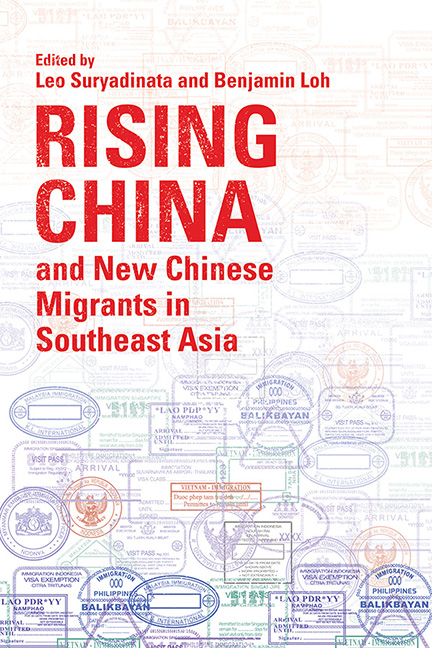Book contents
- Frontmatter
- Contents
- About the Contributors
- Introduction: Rising China and New Chinese Migrants in Southeast Asia
- Part I General Overviews on Rising China and Xin Yimin
- Part II China’s Soft Power, Xin Yimin and Local Communities
- Part III New Chinese Migrants and Local Communities
- Part IV New Chinese Migrants and Local Economies
- Index
12 - Vietnam–China Economic Ties and New Chinese Migrants in Vietnam
Published online by Cambridge University Press: 09 January 2024
- Frontmatter
- Contents
- About the Contributors
- Introduction: Rising China and New Chinese Migrants in Southeast Asia
- Part I General Overviews on Rising China and Xin Yimin
- Part II China’s Soft Power, Xin Yimin and Local Communities
- Part III New Chinese Migrants and Local Communities
- Part IV New Chinese Migrants and Local Economies
- Index
Summary
Much effort has been made to account for the new waves of Chinese migration. And globalization, transnationalism and the changing economic and political context have often been used as potential explanations. For example, Kuhn (2008) suggests that Chinese overseas emigration has important connections to domestic migration trends, and that new Chinese migration has been shaped by historic events. Similarly, Rallu (2002, p. 6) believes that the recent trend in the flow of Chinese migrants is rooted in domestic pressures—including high unemployment, rural underemployment and the rapid increase of the “floating population” within Chinese society. In addition, the close nexus between the rise of China’s economic role and Chinese new migration has also received attention in both academic and policy circles.
This chapter, based on fieldwork conducted in Vietnam, explores the flow of Chinese migration in relation to China’s regional economic integration. In the past, waves of Chinese migration abroad were mainly the result of social conflicts and poverty. Nowadays, the interconnectivity between migration and other economic flows such as trade, investment and economic aid, as well as development policies, are among the main actors (Xenogiani 2006, p. 39). Recent studies by Zhuang and Wang (2010), Chong (2013) and Nyiri (2013) also support this research lead.
In this chapter, new Chinese migrants are categorized into two sub-groups for analysis, though it should be noted that these categorisations may not always be clear-cut. The first group is contracted labourers who are brought to Vietnam by Chinese contractors and companies; the second group is independent migrants who assume all risks in making their way to Vietnam and engage in business in various economic sectors.
The Ethnic Chinese in Vietnam
The term ‘ethnic Chinese’ is referred to as người Hoa in Vietnam, which is derived from the Chinese word Huaren. While this term generally refers to Chinese migrants who live overseas and their descendants, it may not convey whether or not they are Chinese nationals. In the context of Vietnam, ‘ethnic Chinese’ means the descendants of Chinese, including the Hán and other sub groups that originated from China such as Hakka, Xạ Phang and Ngái who settled in the country before it gained national independence in 1945.
- Type
- Chapter
- Information
- Rising China and New Chinese Migrants in Southeast Asia , pp. 213 - 241Publisher: ISEAS–Yusof Ishak InstitutePrint publication year: 2022



